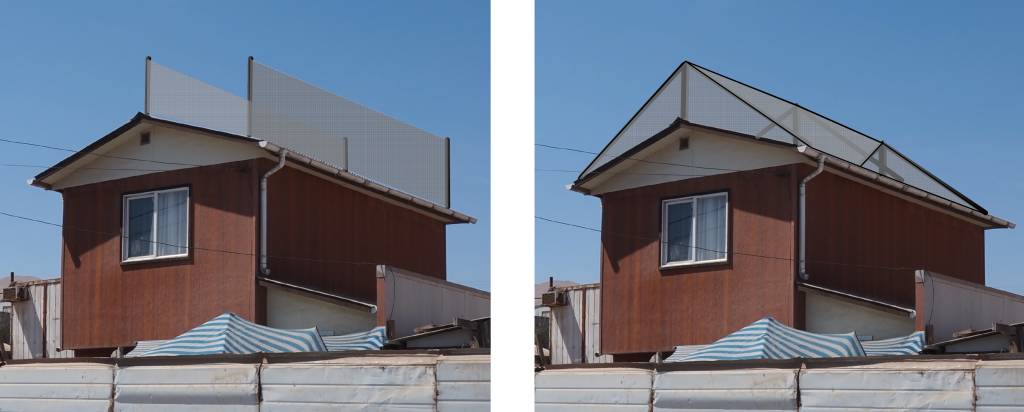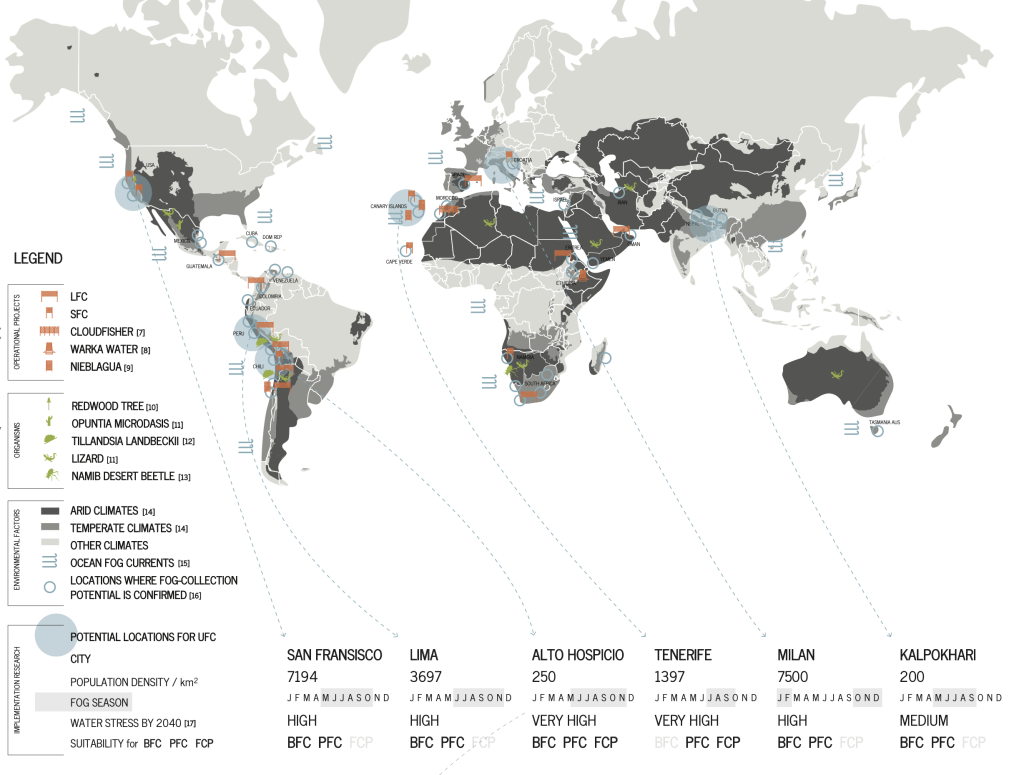Nathalie Verbrugghe
PhD Student, nathalie.verbrugghe@ulb.be
Collaboration: Ahmed Z. Khan (supervisor, ULB), Pablo Osses (Pontificia Universidad Católica de Chile)
Keywords: Urban Water Scarcity, Fog Harvesting, Urban Fog Collecting, Environmental Injustice, Alternative Water Resource, Sustainable Architecture
This strategic research investigates and develops strategies to integrate fog water into the urban metabolism through Urban Fog Collectors (UFCs) using a set of design parameters and a biomimetic approach for efficiency (study of organisms) to deal with the current and future water stress in built-up fog-loaded arid climates. Potential applications are: Building-integrated Fog Collector (BFC), Pavilion-integrated Fog Collector (PFC) and Fog Collector Parks (FCP).

Water scarcity is becoming more apparent in urban areas due to urbanisation, climate change, and environmental injustice. The pressure on the conventional water network is increasing, especially in vulnerable arid regions forcing nations to invest in adaptation, mitigation and redevelopment strategies regarding water management. A promising and viable freshwater alternative is fog, a cloud that touches the ground, which can be collected through a low-cost, low-maintenance and passive structure with a vertically suspended plastic mesh placed perpendicular to the predominant wind direction. The yield depends on the liquid water content of a cloud and the wind speed and direction, capturing up to 30 l/m2/day. While fog collectors already serve as a sustainable and passive alternative for rural communities around the globe, their application in a metropolitan context remains underexplored.
This research includes long-term research stays at the Pontificia Universidad Católica de Chile in Santiago de Chile to conduct fieldwork in the Chilean Atacama Desert at the research centre > Centro del Desierto de Atacama (CDA) in Alto Patache. The efficiency of a fog collector depends on the wind speed, its direction, the type of fog and the position regarding height above sea level. However, for the installation of a collector on the roof, it is restricted in terms of direction and area. Therefore, it is of utter importance to find the most efficient configuration in relation to finding a material that is effective and accessible. The field work consists of 11 flat prototypes of 0.062 m2 constructed with PVC and 2 three dimensional wooden prototypes with surface areas of 0.25 m2. The flat fog collectors focus on biomimetic-inspired materiality while the 3D ones test the dimensional configuration of meshes. In-situ experiments will also be conducted in Alto Hospicio, a fog-loaded city located within the Atacama Desert.


The extensive literature review resulted in a detailed ATLAS showcasing potential locations for fog collection projects, operational fog collection case studies and organisms living in place where fog is their only freshwater resource.

This research is funded by the Belgian Fund for Scientific Research F.R.S.-FNRS with grant number: 40006597.
Selected Publications
Verbrugghe, N.; Khan, A. Z. Water harvesting through fog collectors: a review of conceptual, experimental, and operational aspects, International Journal of Low Carbon Technologies, 2023, 18, 392-403. doi:10.1093/ijlct/ctac129
Verbrugghe, N., Rubinacci, E.; Khan, A. Z. Biomimicry in architecture: a review of definitions, case studies and design methods. Biomimetics, 2023, 8, 1, 107. doi:10.3390/biomimetics8010107
Verbrugghe, N., Khan, A. Z. The social aspects of a fog collection project: Engaging communities through a participatory approach, 2nd Fall Symposium Building Beyond Borders, 2022, Hasselt, Belgium
Key References
[1] He C, Liu Z, Wu J et al. Future global urban water scarcity and potential solutions. Nat Commun 2021;12:4667. https://www.nature.com/articles/s41467-021-25026-3
[2] Cities Alive: Rethinking cities in arid environments. Arup. 2018. https://www.arup.com/perspectives/publications/research/section/cities-alive-cities-in-arid-environments
[3] UNDP. Human Development Report. Beyond scarcity: power, poverty and the global water crisis. New York: UNDP, 2006.
[4] Schemenauer RS, Cereceda P, Osses P. FogQuest FOG WATER COLLECTION MANUAL. 2022.
[5] Fessehaye M, Abdul-Wahab SA, Savage MJ, et al. H. Fog-water collection for community use. Renew Sustain Energy Rev 2014;29:52–62. doi.org/10.1016/j.rser.2013.08.063
[6] Klemm O, Schemenauer RS, Lummerich A et al. Fog as a Fresh-Water Resource: Overview and Perspectives. Ambio 2012;41:221-34. doi.org/10.1007/s13280-012-0247-8
[7] Schemenauer, R.S., and P. Cereceda. 1994b. Fog collection’s role in water planning for developing countries. Natural Resources Forum 18: 91–100.
[8] Bhushan B. Design of water harvesting towers and projections for water collection from fog and condensation. Philos Trans Royal Soc A 2020;378;2019440. doi.org/10.1098/rsta.2019.0440
[9] Mazzoleni I. Architecture Follows Nature – Biomimetic Principles for Innovative Design. CRC Press, 2013.